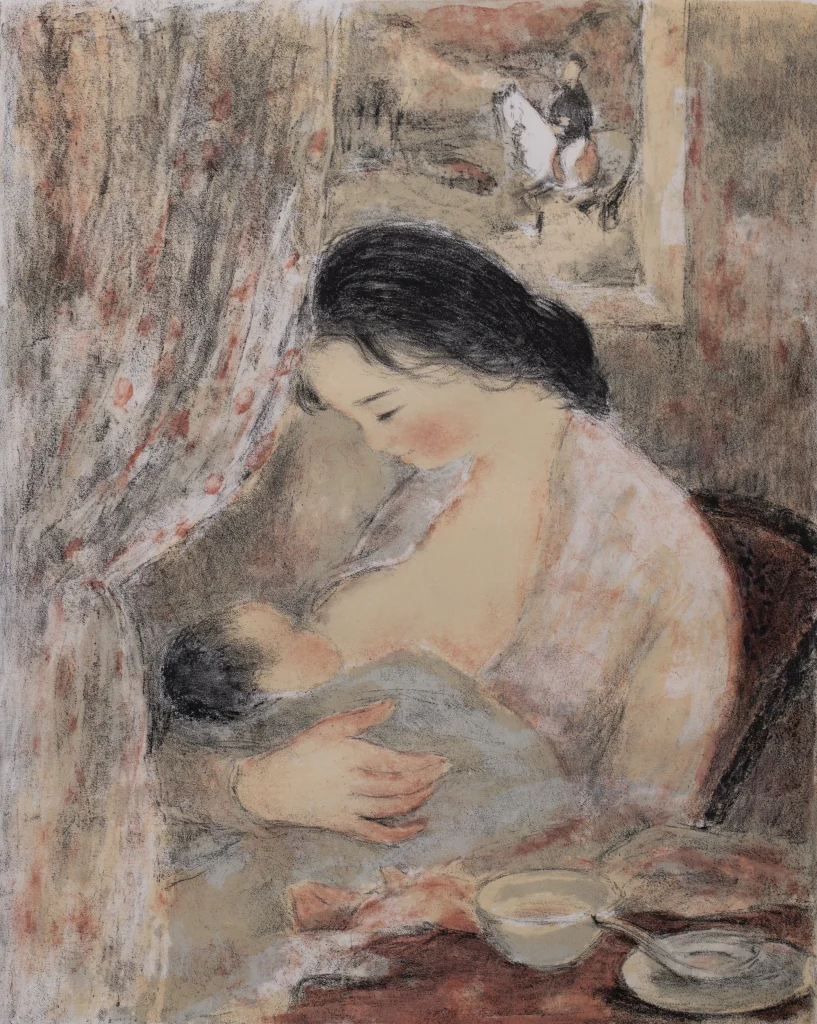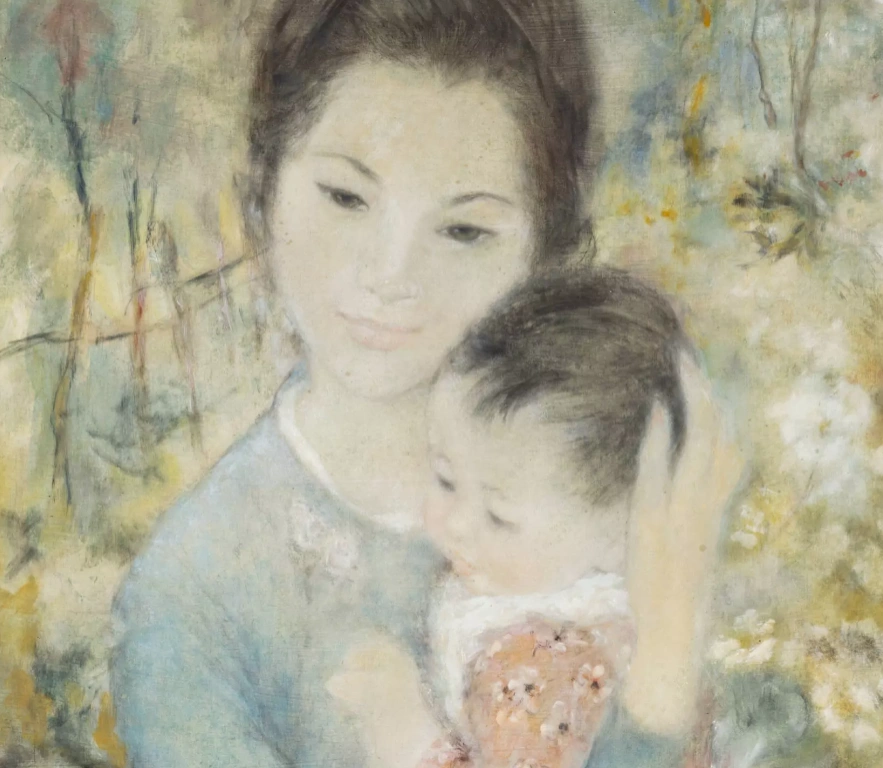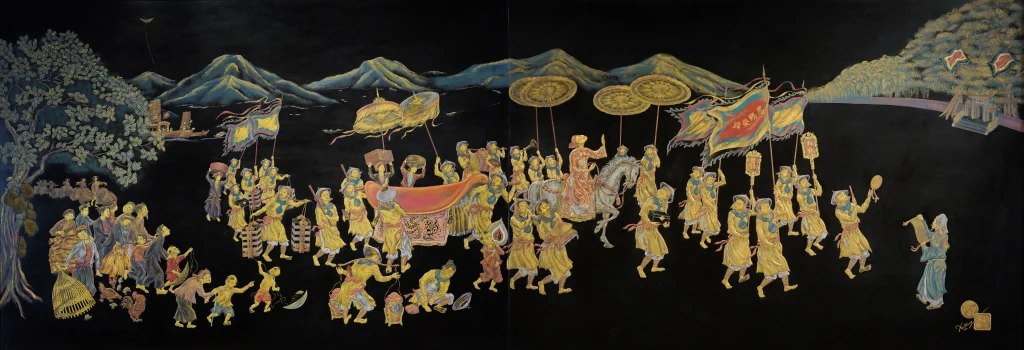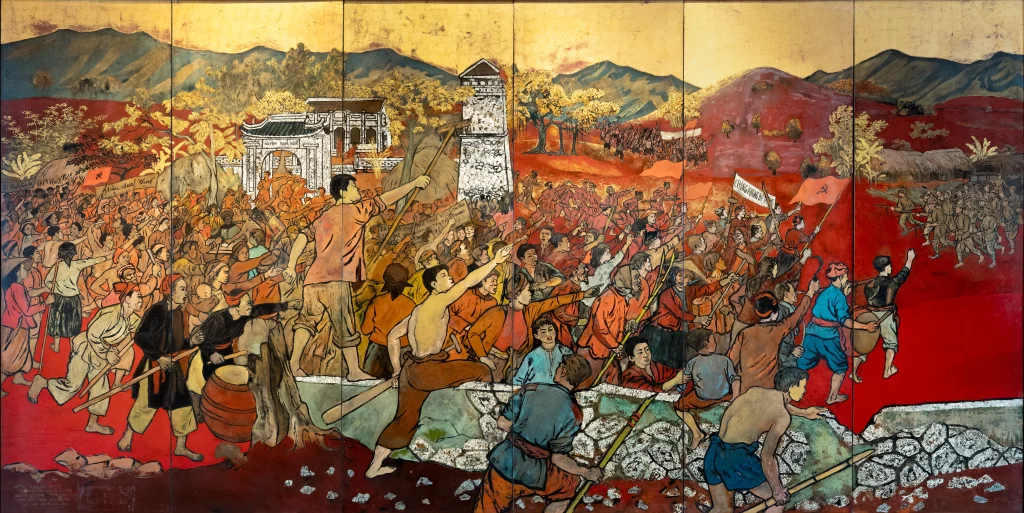When destiny and will coincide
Perhaps, it was an arrangement of destiny. In 1926, Vũ Cao Đàm entered Indochina Fine Arts College – majoring in painting. Once, Principal Victor Tardieu happened to see Vũ Cao Đàm working with a sculpture of his father – Mr. Vũ Đình Thi. Tardieu recognized Đàm’s rare talent and advised him to switch to studying sculpture.
From that moment, Vũ Cao Đàm’s artistic path took a new turn. The second year of class II, the sculpture department had a student more. Indochina College had an excellent valedictorian in 1931. Vietnamese fine arts had one of the most famous artists in both sculpture and painting.
During the period from 1926 to 1931, while still in school, Vũ Cao Đàm created famous statues. Among them, there are statues that have become symbols of modern Vietnamese sculpture such as Girl with Comb, circa 1927-1928, bronze; Man with Priest Hat, 1930, bronze.
In 1931, Vũ Cao Đàm received a scholarship to study sculpture in France. At this time, his parents had just passed away (not long after each other). Vũ Cao Đàm was determined to go abroad, both to satisfy his dream of being exposed to European art and to fill his longing for his parents.
It seemed that the life of the young artist Vũ Cao Đàm would be deeply attached to sculpture after turning from painting to sculpture in his second year of study. But destiny once again brought him back to painting.
After a while in France, during the 1939-1945 world war, materials for making statues were in short supply, bronze casting was banned, Vũ Cao Đàm turned to painting. Although later on, sculpture and painting always went together in his works. But certainly, that time opened his new artistic period with painting – intense and profound of Vũ Cao Đàm.
Life sometimes has unexpected unknowns including both difficulties and advantages. The problem is how each person choose to face and handle them. Vũ Cao Đàm, with his will, determination, passion for creation, and ability for a clear mind in art, has brought the two art forms he attached to to a new level in terms of visual language as well as technique.
A special, multi-talented artist
There is an opinion that Vũ Cao Đàm specialized in sculpture, painting for him is a temporary solution due to the war. But in fact, Vũ Cao Đàm was very successful in both painting and sculpture. He left behind a massive artistic legacy of about a thousand silk works, oil paintings, and portrait statues – including statues that have become legends for his name.
He went to France six years before Lê Phổ and Mai Trung Thứ; nine years before Lê Thị Lựu, but in the early period of silk medium, Vũ Cao Đàm and his three friends had certain influences on their creations because they studied at the same school. At first glance, works of the four artists have quite similar shapes, colors, and subjects. But after a while, the artistic language of each artist has its own color and personality. Mai Trung Thứ devoted himself faithfully to silk. Lê Thị Lựu returned to painting in the 1950s with an absolutely feminine style. Lê Phổ and Vũ Cao Đàm first worked in silk, then switched to oil. But it was not until the 1960s that Lê Phổ completely switched to oil, while Vũ Cao Đàm stopped working in silk – after 1952. He shared: “Because of my curiosity, I often learn in depth about painting and I found that silk are limited by the size of the work, and there is a glass cover to protect the silk, so I can’t make it large. Moreover, when we were in school, we had wanted to paint impressionism and paint like new schools without forgetting all the beauty of Eastern art.”
Thus, Vũ Cao Đàm created in silk for about 10 years. But in those 10 years, during the process of creating, he discovered his own silk technique. It was this technique that created a special mark for Vũ Cao Đàm’s silk works, especially the portraits. He found a way to depict flesh on silk in a meticulous and delicate way like oil. Engineer Ngô Thế Tân, husband of artist Lê Thị Lựu, shared: “Vũ Cao Đàm was the first person to find a way to transform silk works. It is Vũ who discovered the silk mounting technique that made silk works go beyond classical techniques.” Therefore, “Vũ Cao Đàm’s silk works are more sublte and sophisticated than others… there are depth, sharp lines…”2
This demonstrates Vũ Cao Đàm’s exceptional talent and diversity in artistic creation in forms of art. Vũ Cao Đàm’s paintings are rich in expression with “silk works imbued with the ancient look of a thousand years ago, oil paintings with ancient perspectives but modern colors”.
The two silk works “Meeting” and “Message for love” were created in the early 1950s – at this time he had gone through the period of painting with a combination of classical Eastern silk techniques, European visual, Vietnamese themes, bright and gentle blue colors. This was the period when his silk reached their peak. After mounting the silk, he painted on layers of color; even mixing materials. This technique creates aesthetic effects different from traditional silk when the characters and some other details have solids, light and dark, like oil paint instead of flat areas. The themes often include the classic Truyện Kiều, portraits of women, mothers and children, and especially the frequent appearance of male characters.
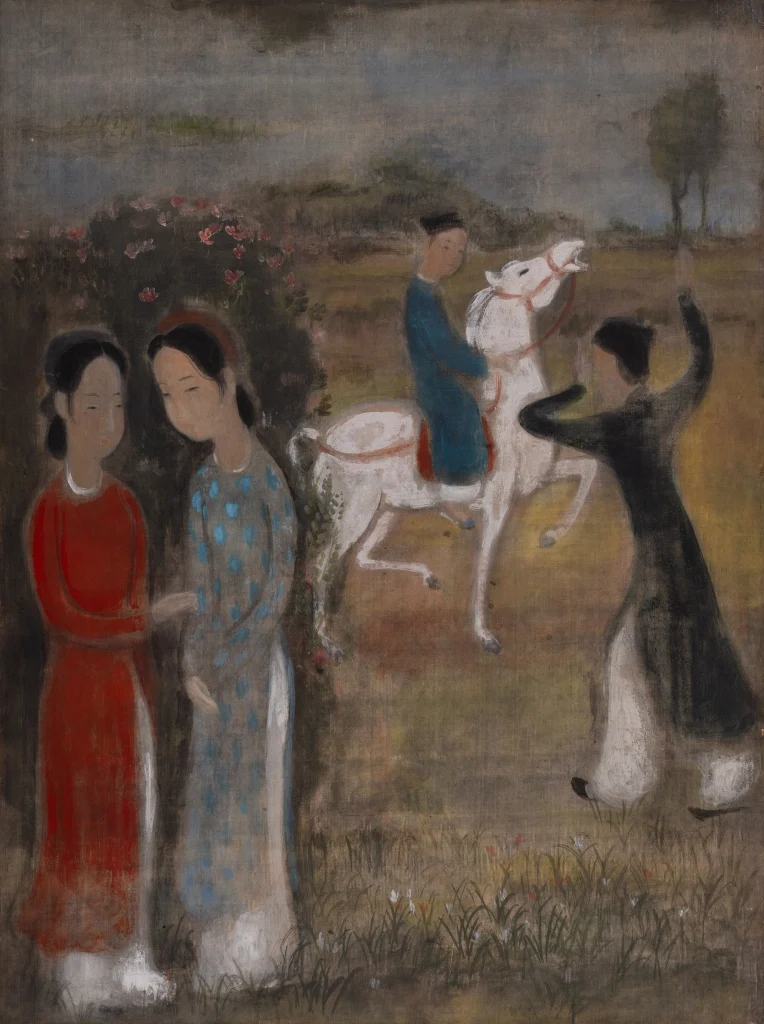
“Meeting”, a work on silk by Vũ Cao Đàm
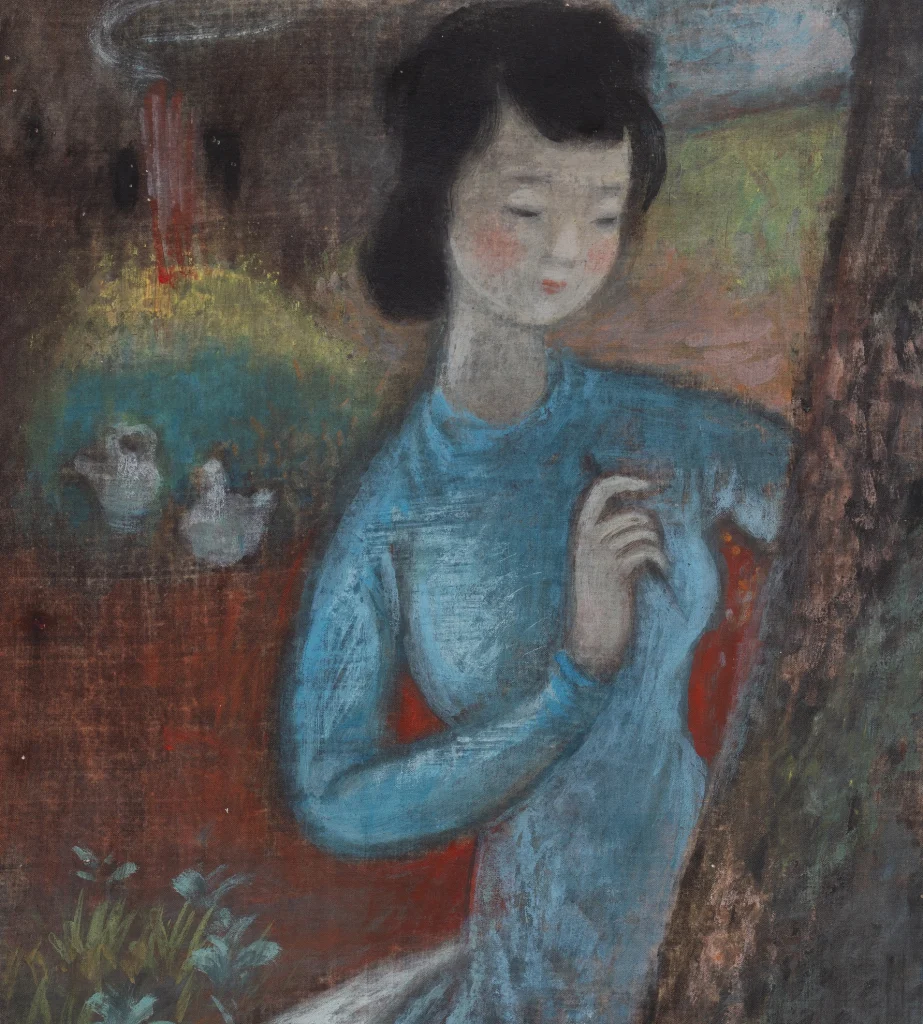
Detail of the work “Message for love”, silk, Vũ Cao Đàm
Of the four artists Phổ- Thứ-Lựu-Đàm, Vũ Cao Đàm seems to be the one who created the most male characters and often had two main lines. Male warriors (military officials) with horses and male scholars (civil officials) with books and lutes. They are placed in different positions. Sometimes they are husbands, fathers with flowers, apples; sometimes they proposed with rings and jade bracelets… These characters are idealized by the artist in terms of image. In addition to the romantic and lyrical nature, he portrayed male characters with a strong, steadfast personality.
As his friend and peer, Lê Thị Lựu recognized the strength of the male character in Vũ Cao Đàm’s works, radiating positive energy and trust, so she brought the image of that ideal male character into her work “Meal in mother’s lap” for a dream of peaceful protection.
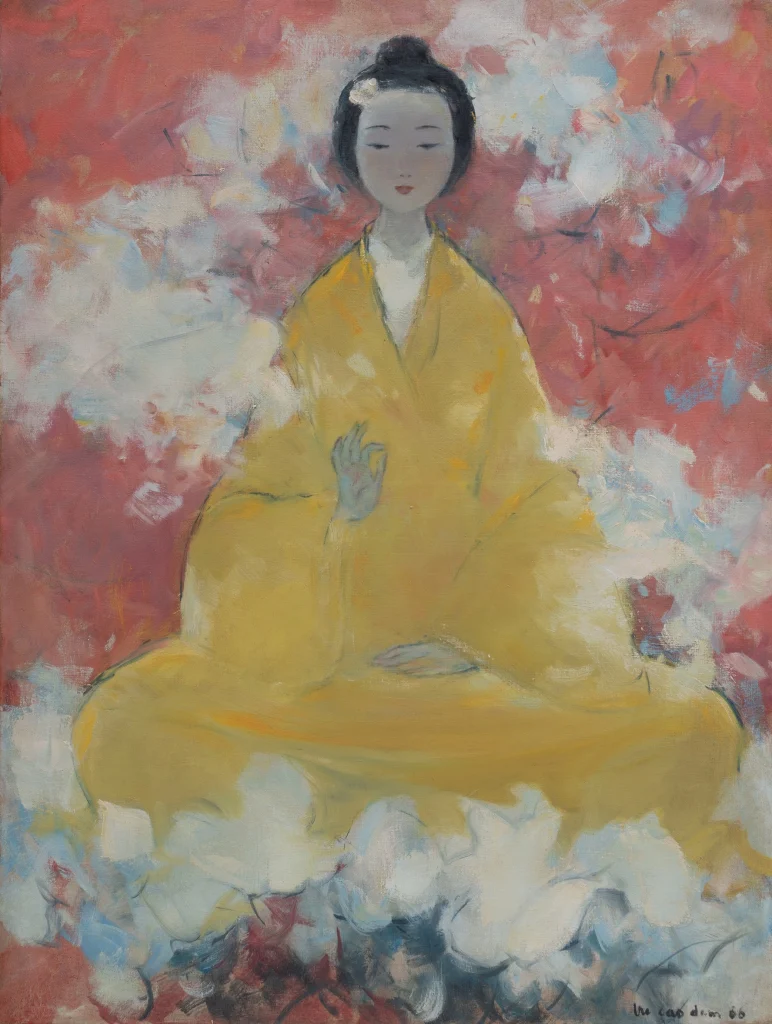
“Zen”, an oil painting of Vũ Cao Đàm
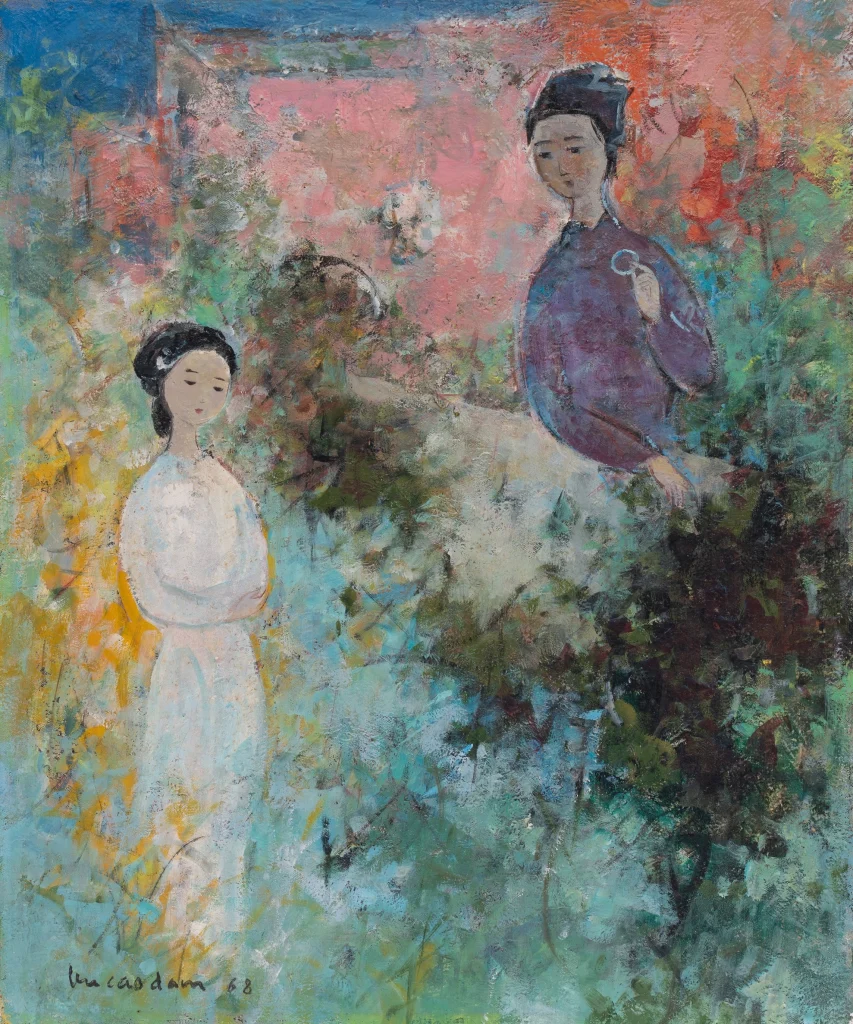
“The jade bracelet”, a work of oil by Vũ Cao Đàm
The Zen theme, proposing with rings and jade bracelets was very popular with Vũ Cao Đàm’s works. He even drew them over and over again. Just like Mai Trung Thứ, he only needed to change the character’s position, change the color scheme, change a gesture to give the work with the old theme a fresh appearance. Not only that, Vũ Cao Đàm loved Impressionism, so he often used pure, bright colors, with a trowel and brush to create layers of colors overlapping each other, making a feeling of floating and fluffy air.
In addition to the brilliant color harmony influenced by Impressionism, the blue color, especially the blue-green color that he favored, had created aesthetic recognition, forming Vũ Cao Đàm’s own color language. This blue might be influenced by the blue of the Mediterranean Sea, in the province of Vence near Cannes, where he lived and worked since 1950.
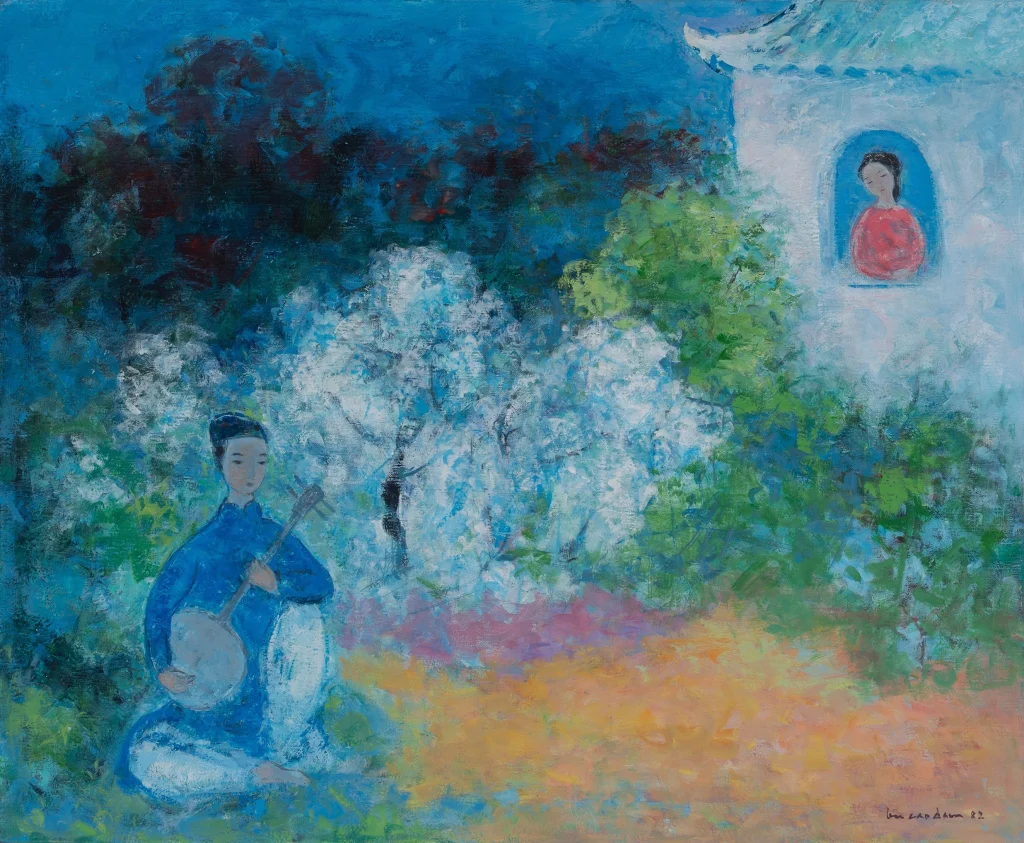
“The melody of love”, an oil painting of Vũ Cao Đàm
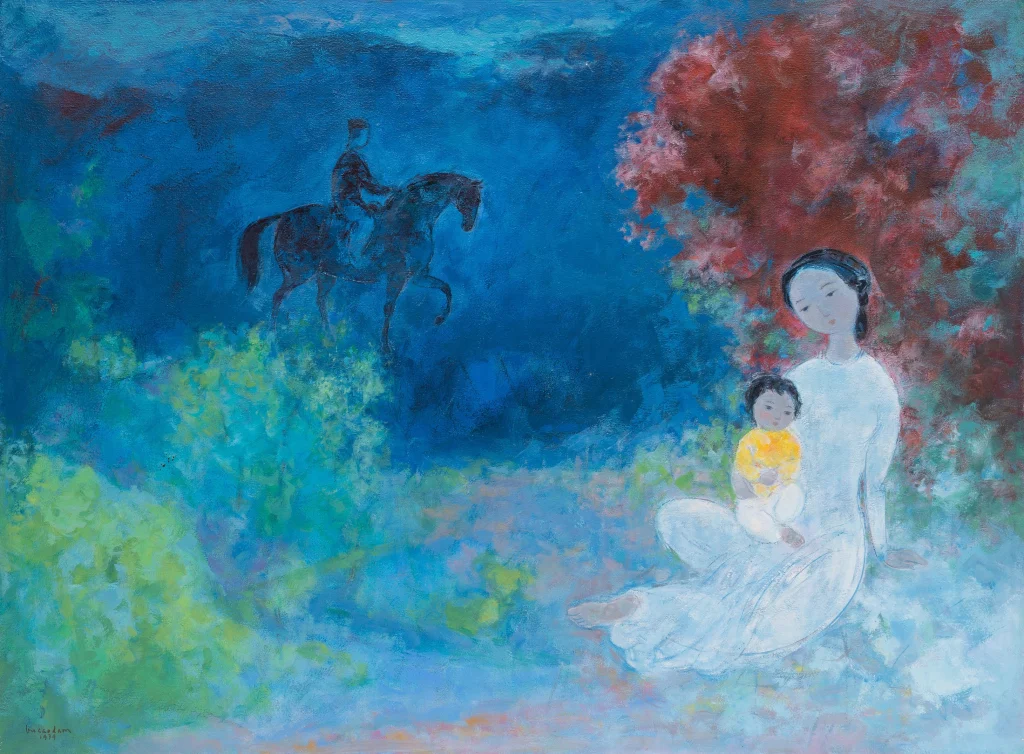
“In a place of us”, an oil painting of Vũ Cao Đàm
The above analysis shows that, for Vũ Cao Đàm, sometimes the theme in the work is just a reason for him to interpret his thoughts and feelings, thereby expressing the creative ability that he has discovered during the working process. Vũ Cao Đàm originally came from sculpture, so he always consciously created shapes and emphasized the thickness of the material surface. The technique of overlapping layers of blue with shades, creating space between the layers and the depth, on which the shapes seem to shine without contours.
For Vũ Cao Đàm, the boundary between the two languages of painting and sculpture did not pose any difficulties for him but seemed to complement his creative thinking. This affirms that, for Vũ Cao Đàm, in addition to his innate ability in artistic creation, he also had the inner strength and will to be able to perfect the path of art he chose.
That is the versatility of a special talent proven by the rich heritage of visual arts that he left for posterity.
Written by Viet Art View
Notes:
1, Excerpt in the article Talking with Vũ Cao Đàm of writer Thụy Khuê.
2, Excerpt in the article Ngô Thế Tân talking about Lê Thị Lựu and artists friends in France: Vũ Cao Đàm, Lê Phổ, Mai Trung Thứ.



